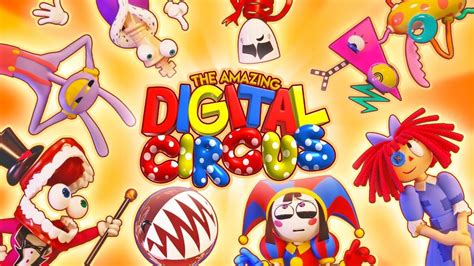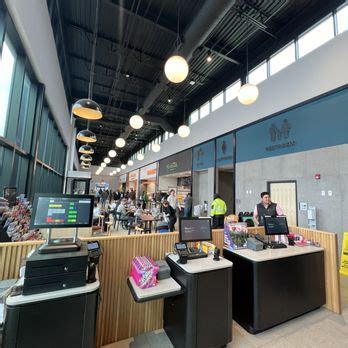Gangle Digital Circus

The concept of a digital circus, as embodied by the term "Gangle Digital Circus," represents a fascinating intersection of technology, entertainment, and innovation. At its core, a digital circus is an immersive and interactive experience that leverages digital technologies to create a unique form of entertainment. This can include virtual reality (VR) experiences, augmented reality (AR) performances, digital art exhibitions, and even online platforms that simulate the traditional circus experience but with a modern, digital twist.
The term "Gangle" itself suggests a blend of the digital and the spectacular, hinting at a chaotic yet harmonious fusion of traditional circus acts with cutting-edge digital technologies. The idea of a digital circus, therefore, is not just about replacing traditional circus elements with digital counterparts but about creating an entirely new genre of entertainment that appeals to a wide and diverse audience. It combines the thrill and spectacle of the circus with the endless possibilities offered by digital media, including interactivity, virtuality, and global reach.
Key Points
- The Gangle Digital Circus represents a fusion of traditional circus entertainment with modern digital technologies.
- It includes a variety of digital experiences such as VR, AR, digital art, and online simulations of circus performances.
- This concept aims to create a new, immersive form of entertainment that can reach a global audience.
- The digital circus experience is characterized by its interactivity, allowing participants to engage with the performances in innovative ways.
- It offers a platform for artists and performers to experiment with new forms of expression, blending physical and digital media.
The Evolution of the Digital Circus

The evolution of the digital circus is closely tied to advancements in digital technology and the internet. As these technologies have become more sophisticated and accessible, they have enabled the creation of more complex and engaging digital experiences. From the early days of the internet, when simple online games and interactive websites were considered cutting-edge, to the current era of VR and AR, the digital landscape has undergone a profound transformation. This transformation has not only changed how we consume entertainment but has also opened up new avenues for creators to produce and distribute their work.
Key Technologies in the Digital Circus
Several key technologies are driving the development of the digital circus. Virtual Reality (VR) and Augmented Reality (AR) are perhaps the most prominent, as they offer the most immersive experiences. VR technology allows users to step into completely virtual worlds, while AR enhances the real world by overlaying digital information and images onto it. Both technologies have been used in various circus and performance arts settings to create innovative and interactive shows. Additionally, technologies like 3D projection mapping, LED screens, and interactive flooring are also being used to enhance the digital circus experience, making it more dynamic and engaging.
| Technology | Description |
|---|---|
| Virtual Reality (VR) | Provides a fully immersive digital experience, transporting users into virtual worlds. |
| Augmented Reality (AR) | Enhances the real world by overlaying digital information and images, creating an interactive and dynamic environment. |
| 3D Projection Mapping | Transforms objects or spaces into displays for video projection, creating immersive and interactive environments. |

Challenges and Future Directions

Despite the excitement and potential of the digital circus, there are challenges to its widespread adoption and development. One of the primary concerns is the cost of the technology, particularly for VR and high-quality AR experiences, which can be prohibitively expensive for many potential participants. Additionally, there is the issue of accessibility, as not all audiences have equal access to the necessary technology or internet connectivity to fully engage with digital circus experiences. However, as technology advances and becomes more affordable, these barriers are expected to decrease, making the digital circus more accessible to a broader audience.
Looking to the future, the digital circus is poised to become an increasingly important part of the entertainment landscape. As technologies continue to evolve, we can expect to see even more innovative and immersive experiences. The potential for the digital circus to democratize access to entertainment, allowing people from all over the world to participate in and enjoy circus arts in new and exciting ways, is vast. Moreover, it offers a platform for artistic innovation, encouraging performers and creators to experiment with new formats and mediums, pushing the boundaries of what is possible in the world of entertainment.
What is the primary goal of the Gangle Digital Circus?
+The primary goal of the Gangle Digital Circus is to create a new form of entertainment that combines traditional circus elements with modern digital technologies, offering an immersive and interactive experience to a global audience.
How does the digital circus use VR and AR technologies?
+The digital circus uses VR and AR technologies to create immersive and interactive performances. VR transports users into virtual worlds, while AR enhances real-world environments with digital overlays, allowing for dynamic and engaging experiences.
What are the challenges facing the development of the digital circus?
+The primary challenges include the high cost of technology, particularly for VR and AR experiences, and issues of accessibility, as not all potential audiences have the necessary technology or internet connectivity to fully engage with digital circus experiences.
In conclusion, the Gangle Digital Circus represents a vibrant and evolving concept that is redefining the entertainment landscape. By combining the timeless appeal of the circus with the limitless possibilities of digital technology, it offers a unique platform for artistic expression, innovation, and global connectivity. As technology continues to advance and become more accessible, the digital circus is poised to play an increasingly significant role in the world of entertainment, pushing the boundaries of what is possible and creating new and exciting experiences for audiences around the globe.



